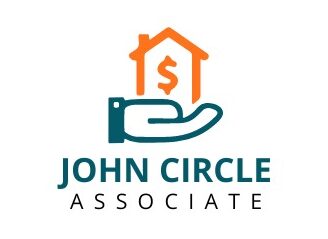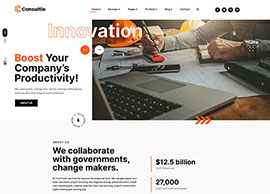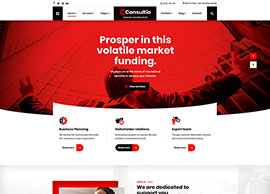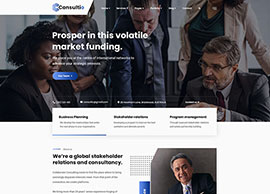In the last weeks, under various circumstances, I have met many Americans in the UK and have been surprised at the vehemence of the anti-Trump feelings among traditional Republican and Democrat voters alike, as their businesses are negatively impacted by Trump’s unilateral diktats.
Products sourced in China and Asia now have to be sourced in ‘fortress’ America at vastly more expense. It has become apparent that the proposed tariffs will damage the imposer more than the target countries.
I recall the BRICS+ conference held in Russia last October when nations representing about half the world’s population discussed no longer wanting to trade resources and oil in US dollars. These nations are usefully building trading agreements with each other, just as JPMorgan warns that markets are being too complacent on the US’s burgeoning $27trn debt pile. The US has also lost its triple-A credit rating as the dollar falls against other global currencies.
I see Trump as the archetypal property trader – that’s what he knows – who typically makes outrageous mark-down bids for a property with the view to backtracking and negotiating. That’s how most commercial property is traded, but it is demonstrably not an approach that works in international trade negotiation. Surely, come July, at the expiry of the 90-day import tariffs pause on around 185 nations, we will see significant reductions and backtracking as the potential damage caused becomes increasingly clear.
Meanwhile, we appreciate the cordial US relationship with the UK and favourable tariffs. That is probably supported by Trump’s late mother being from Stornoway – presumably he qualifies for a British passport – and his liking for owning and playing at Scottish golf clubs, where local course companions report him as engaging and amusing company.
In these uniquely difficult circumstances, where global politics and war are instantly transmitted through the media in our connected world, the constant changes of mind, backtracking and conflict make it impossible to judge the direction of markets. My own response is to partly stay cool, comfortable with my core holdings, and partly to adjust to events.
ADVERTISING
My portfolio at a headline level
With UK markets up about 8% this year, the US down 4.5%, and the ‘magnificent seven’ down 10%, I feel moderately bullish for the UK. Albeit, I am very wary and have reorganised my equity portfolio to include only stocks with easy liquidity, enabling fast exits if appropriate.
Currently I’m holding 20% cash in sterling, 18% bonds, 4% gold, and 58% global equities. The bonds are mostly short-dated with low coupons – thereby incurring minimal tax with the capital gains on gilts being tax free – plus some high-yielding corporate bonds which I hold in ISAs, such that dividends are also tax free.
Now we have prime minister Keir Starmer heralding a new era of opportunity in relations with Europe, while others consider this capitulation and retreat; but it will certainly lead to some cheaper food bills – supposedly boosting the economy £9bn a year. Certainly, it will significantly ease trading for some UK companies just as the European Commission cuts eurozone growth forecasts following uncertainty from the threatened tariff wars.
The US has dominated world markets for the last decade with the MSCI US index returning an annual 12.4%, with a projected price-to-earnings (PE) ratio of 21 times. Those gains have been double the MSCI World ex-US index with 6.1% annual returns, and today an aggregate PE of 14 times. But as global investors become increasingly wary of the US, other regions will benefit and already we see Apple moving most of its iPhone assembly from China to India, as other behemoths plan to follow.
I have added to my holding in Schroder AsiaPacific (SDP) investment trust, up 3% in one year on a 10.5% discount. Regionally, the portfolio is invested 23% in Taiwan, 21% China, 18% India, 38% in other Asian markets.
Doubling down on defence
Meanwhile the realisation of our dependence on US for defence and technology expertise has led to the massive new €150bn SAFE Fund (Security Action for Europe), so I will hold very tightly to my arms exposure in Chemring (CHG), Germany’s Rheinmetall, the also German Renk Group, and the VanEck Defence UCITS ETF (DFNG)
I have bought Gooch and Housego (GHH), providing photonics technology and solutions to industrial, aerospace, defence and life sciences applications; and with a recent US acquisition, 34% of revenue is in the US defence and aerospace market. With a share price down 8% in one year, but now with strong projected earnings, the stock is on a 13 times PE and a 0.6 price-to-earnings growth (PEG) ratio; it looks good value in this high technology sector.
Adding to my European defence companies I have bought Hensoldt, based in Germany, focused on sensor technologies for protection and surveillance missions in the defence, security and aerospace sectors. Subsidiary Hensoldt UK supplies maritime navigation and surveillance radar systems branded Kelvin Hughes, a renowned name in radar for 70 years. With a market cap of €9bn, a projected PE of 26 times and 0.9 times PEG, it will be a long-term hold for me as Europe’s ‘tooling’ up in defence will take decades – even as Germany plans to increase its own annual additional defence spending to over £100bn.
Similarly, Leonardo will be a big beneficiary, supplying helicopters, defence electronics and security systems. The helicopter division serves both military and civil markets through AgustaWestland and cooperates in international programs, such as Eurofighter Typhoon, F-35, and Tempest. An Italian multinational company, with a market value of €30bn, projected PE of 19 timesand PEG of 0.7 times, it will be another long-term hold for me.
Concurrent Technology (CNC) has almost trebled since I first bought it two years ago, but now seeing it as a long-term defence stock, I have added to my holding. It serves defence, aerospace, telecom and transport industries, designing and supplying a range of central processing unit (CPU) boards rigorously tested to withstand extreme temperatures, shock, vibration, and other environmental stresses, ensuring long-life operation in hazardous environments. Revenue is 41% US, where products are manufactured in-country, and 40% Europe. The stock is not cheap on a projected 22 times PE but strong growth continues and forecasts are rising with the current significant increased defence spending.
Lastly, I have bought back into QinetiQ (QQ), having sold in March, taking fright at short-term contract award delays. The situation seems to have stabilised with the company aggressively buying back shares. Surely benefiting from the current massive European planned defence spend, QQ looks good value again on a projected 13 times PE and 0.8 times PEG.
source: city wire






































